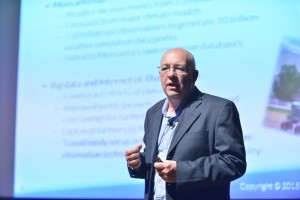Plenary Keynote, 16 November 2022, 9am GMT
Business Intelligence & Analytics Conference – 14-17 November 2022
 In the keynote, Dr, Barry Devlin will examples of how good data went bad, why it happened and what was the outcome, and how you can avoid similar rotten problems in your business.
In the keynote, Dr, Barry Devlin will examples of how good data went bad, why it happened and what was the outcome, and how you can avoid similar rotten problems in your business.
Register at “Business Intelligence & Analytics Conference”
Data doesn’t really “go” bad, of course. At least, not in the way that week-old milk in the fridge does. When you open that carton, you just know it’s bad. Bad data doesn’t stink like that. Or mostly not. But consuming it can be just as sickening.
Sometimes data just starts off bad and gets worse. Other times, it’s people or processes that do bad things to it almost as soon as it’s created or maybe even before it’s captured. Or maybe it’s what happens as it’s used as information or interpreted to gain insights. Worse still, nobody may notice how bad it is until government or regulatory inspectors arrive at the door. Worst of all, it may be like nuclear waste, dumped at night in a well, slowly and invisibly poisoning everybody who draws from it.
So much to go wrong! So much to lose. The sad truth is that—despite the incomparable weight placed upon it today—data can be and often is bad in so many ways. In this session, we’ll explore a few examples of how good data went bad, why it happened and what was the outcome, and how you can avoid similar rotten problems in your business.
Key take-aways:
- Good data begins at home… with the best intentions;
- If data are facts, what happens when facts are no longer factual;
- If you don’t manage it (the data), you can’t measure it (your business);
- Data used without knowledge is a recipe for disaster;
- Ever more data isn’t all it’s cracked up to be.

Leave A Comment